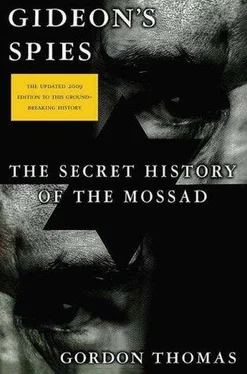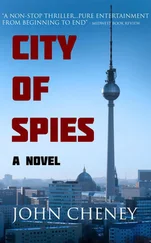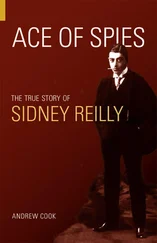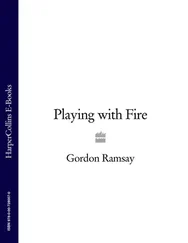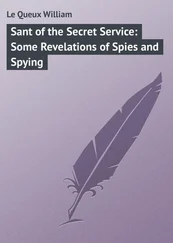00:22 A.M. The white Fiat Uno passed through traffic lights in the Place de la Concorde. Henri Paul’s Mercedes is forced to temporarily stop at the lights.
00:23 A.M. The Mercedes approaches the Alma tunnel. Henri Paul would most certainly have seen the white Uno ahead of him.
00:24 A.M. The Mercedes, traveling at high speed, passed over the dip at the tunnel entrance. In the back seat Diana and Dodi would have experienced for a split second a sensation not unlike that of a plunging roller-coaster.
Seconds later there came a thunderous noise inside the tunnel. A roaring screeching of metal, a reverberating, crumping sound that seemed to go on and on.
Henri Paul and Dodi were dead. Diana was dying.
Moments later, according to the Mossad report, the white Uno had driven into a side street off the Avenue Montalgne. Waiting there was a pentachnicon, its ramp lowered. The Uno had driven up the ramp. The pentachnicon’s doors had been closed.
Hours later the Uno had been gripped in the claws of the crusher. In moments it had become a piece of crushed metal, devoid of any identification.
There, at the time of writing, the matter rests. Can Tomlinson produce anything new? Could Ben-Menashe have found evidence that would finally satisfy al-Fayed’s belief in a conspiracy? Was Diana really pregnant at the time of her death? Had Mohamed al-Fayed become so blinded by grief mingled with anger that he was ready to make this thesis fit the facts?
These questions will be revisited well into this new century. But they may never be answered fully enough to satisfy Mohamed al-Fayed or convince all those who believe him a dangerously misguided man who is using vast sums of money to nail down a truth that may, just may, be best kept under lock and key by all those directly involved.
Some of Maurice’s colleagues have increasingly felt that the attempt to entrap Henri Paul was additional proof that Mossad has lurched a little further out of control, carrying out reckless international operations without taking into account the potential long-term consequences for itself, for Israel, for peace in the Middle East, and, ultimately, for the relationship with the Jewish state’s oldest and closest ally, the United States of America. Several officers claimed that since Benyamin Netanyahu became prime minister in 1996, matters have worsened.
A veteran member of the Israeli intelligence community has said: “People are seeing those who work for Mossad are often thugs masquerading as patriots. That is bad for us [and] for morale, and, in the end, will have a bad effect on Mossad’s relationship with other services.”
Another experienced Israeli intelligence officer was equally blunt: “Netanyahu behaves as if Mossad is part of his own version of the Court of King Arthur; something new every day or the knights of his own Round Table get bored. That’s why things have gone very wrong with Mossad. There’s a need to ring the alarm bell before it’s too late.”
The first lesson I learned during a quarter of a century of writing about secret intelligence is that deception and disinformation are its stock-in-trade, along with subversion, corruption, blackmail, and, sometimes, assassination. Agents are trained to lie and to use and abuse friendships. They are the very opposite of the dictum that gentlemen do not read each other’s mail.
I first encountered their behavior while investigating many of the great spy scandals of the Cold War: the betrayal of America’s atomic bomb secrets by Klaus Fuchs, and the compromising of Britain’s MI5 and MI6 by Guy Burgess, Donald Maclean, and Kim Philby. Each made treachery and duplicity his byword. I also was one of the first writers to gain access to the CIA’s obsession with mind control, a preoccupation the Agency was forced to confirm ten years after my book on the subject, Journey into Madness, appeared. Denial is the black art all intelligence services long ago perfected.
Nevertheless, in getting to the truth, I was greatly helped by two professional intelligence officers: Joachim Kraner, my late father-in-law, who ran an MI6 network in Dresden in the post–World War II years, and Bill Buckley, who was station chief of the CIA in Beirut. Physically they were similar: tall, lean, and trim, with chins ready to confront trouble halfway. Their eyes revealed little—except to say if you weren’t part of the answer, you had to be part of the problem. Intellectually formidable, their criticism of the agencies they served at times was astringent.
Both constantly reminded me that a great deal can be heard from what Bill called “murmurs in the mush”: a deadly skirmish fought in an alley with no name; the collective hold-your-breath when an agent or network is blown; a covert operation that could have undone years of overt political bridge building; a snippet of mundane information that completed a particular intelligence jigsaw. Joachim added that “sometimes a few words, casually offered, could often throw a new light on something.”
Proud of being members of what he called “the second oldest profession,” both not only were my friends, but convinced me that secret intelligence is the key to fully understanding international relations, global politics, and diplomacy—and, of course, terrorism. Through them I made contacts in a number of military and civilian intelligence agencies: Germany’s BND and France’s DGSE; the CIA; Canadian and British services.
Joachim died in retirement; Bill was murdered by Islamic fundamentalists who kidnapped him in Beirut and triggered the Western hostage crisis in that city.
I also met members of Israel’s intelligence community who first helped me by filling in the background of Mehmet Ali Agca, the Turkish fanatic who attempted to assassinate Pope John Paul in St. Peter’s Square, Rome, in May 1981. Those contacts were arranged by Simon Wiesenthal, the renowned Nazi hunter and an invaluable Mossad “source” for over forty years. Because of his fame and reputation, Wiesenthal still finds doors readily open, especially in Washington.
It was in that city in March 1986 that I learned a little more of the tangled relationship between the intelligence communities of the United States and Israel. I was there to interview William Casey, then the director of the Central Intelligence Agency, as ongoing research for my book Journey into Madness, which deals in part with the death of Bill Buckley.
Despite his customized suit, Casey was a shambling figure. His jowled face was pale and the rims of his eyes were red as we sat in a Washington club; he looked like someone whose ectoplasm was running out after five years of directing the CIA.
Over a Perrier he confirmed the conditions for our meeting. No notes, no tape recordings; anything he said would be purely background. He then produced a sheet of plain paper on which were typed his biographical details. He had been born in New York on March 13, 1913, and graduated from St. John’s University in 1937 with a law degree. Commissioned into the U.S. Naval Reserve in 1943, within months he had transferred to the Office of Strategic Services, the forerunner of the CIA. In 1944 he became chief of the OSS Special Intelligence Branch in Europe. Next came the chairmanship of the Securities and Exchange Commission (1971–73); then, in quick succession, he was undersecretary of state for economic affairs (1973–74); president and chairman of the Export-Import Bank of the United States (1974–76); and a member of the president’s Foreign Intelligence Advisory Board (1976–77). In 1980 he became campaign manager for Ronald Reagan’s successful bid for the presidency. A year later, on January 28, 1981, Reagan appointed him DCI, the thirteenth man to hold the single most powerful office in the U.S. intelligence community.
Читать дальше
